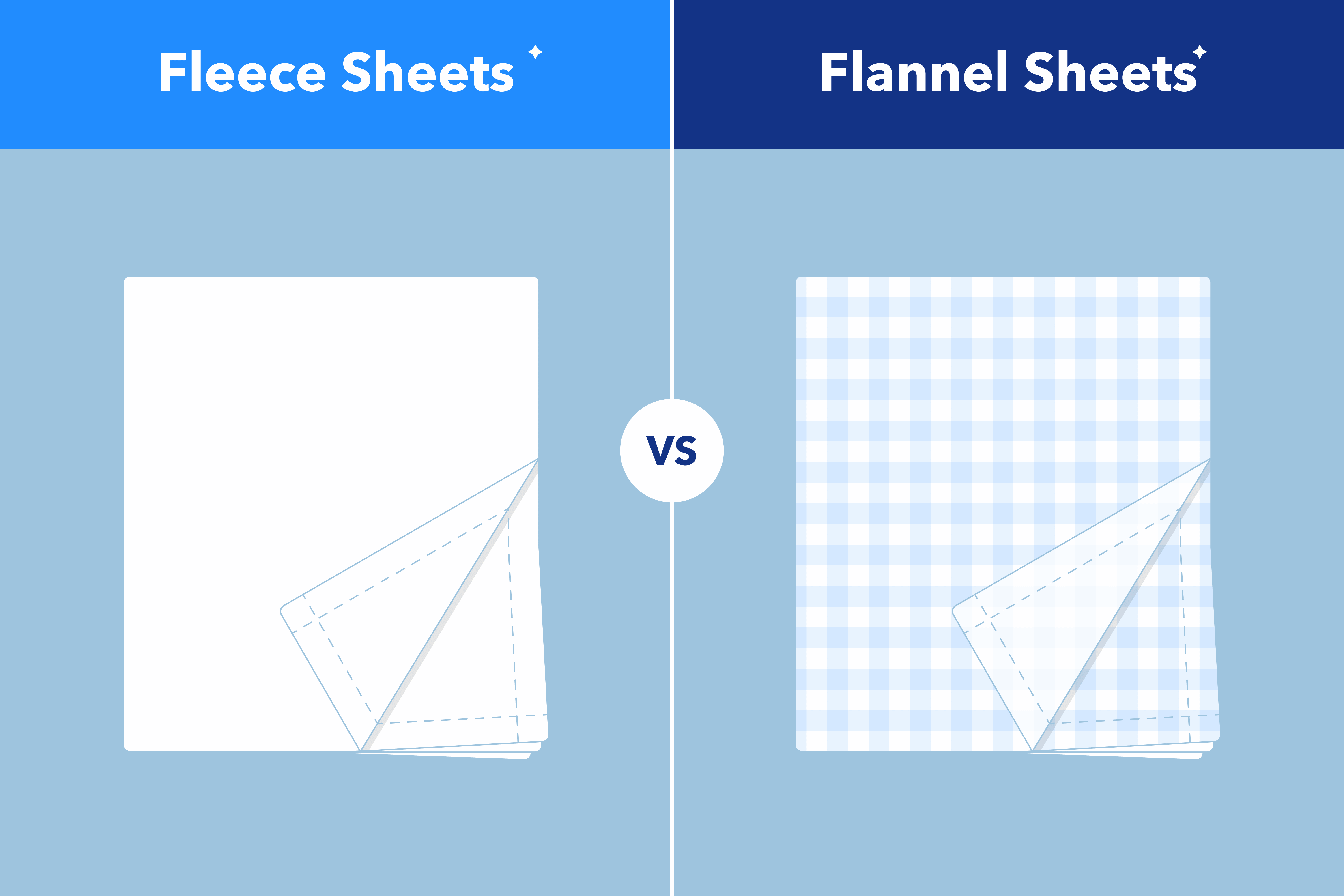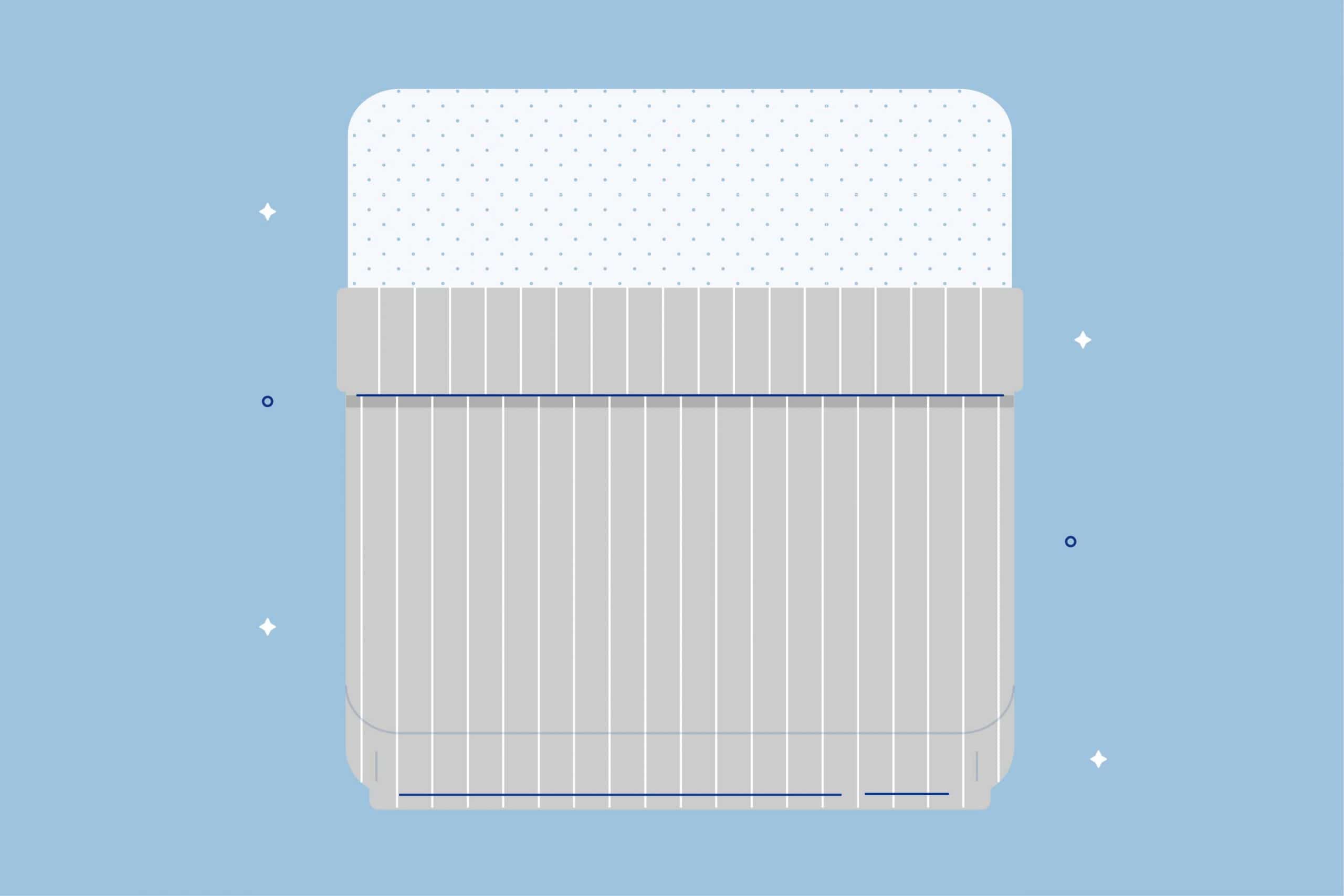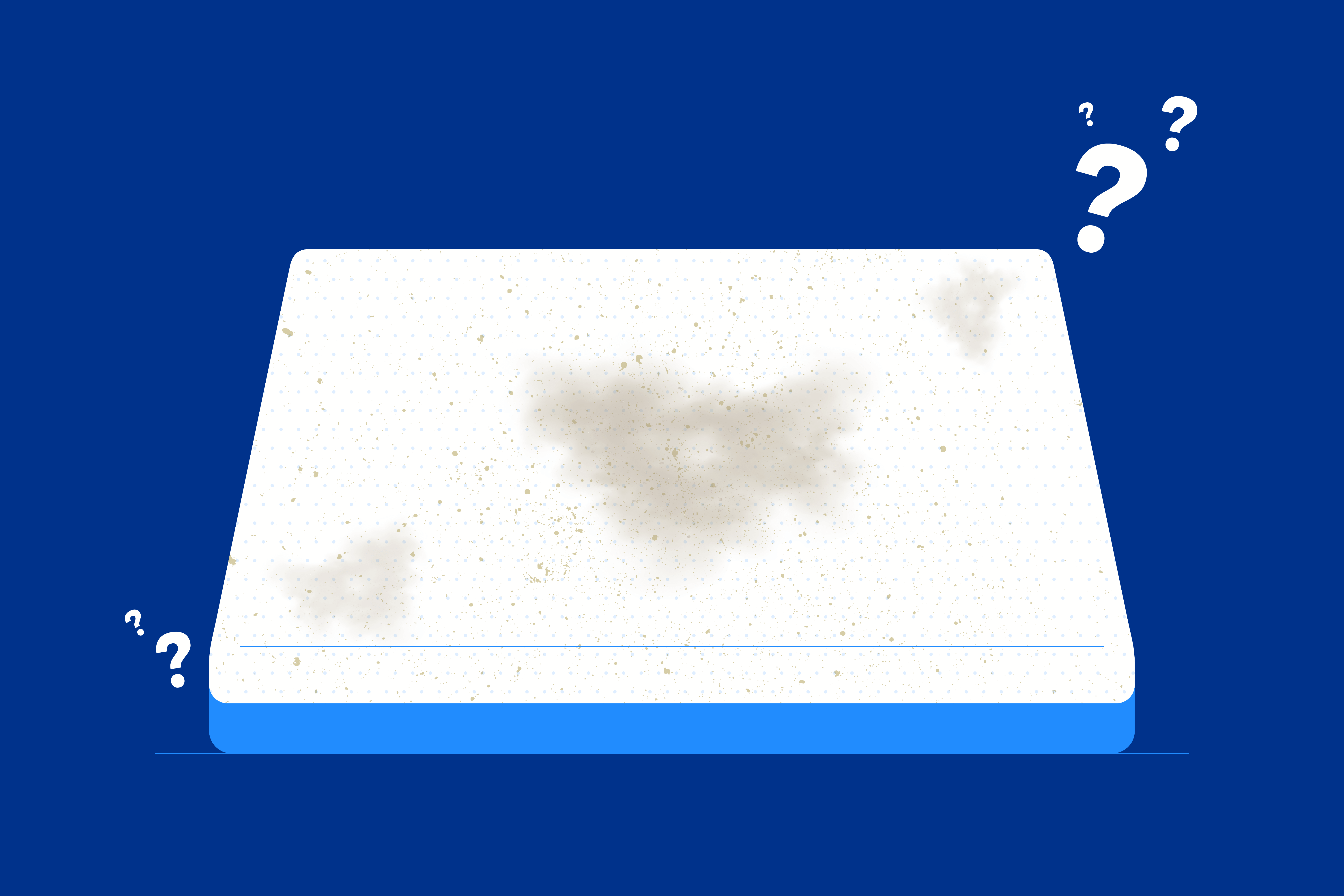Key Takeaways
- Fleece vs. Flannel Showdown: Explore the warmth, comfort, and maintenance of fleece and flannel sheets for the coziest winter bedding. Your guide to choosing the perfect material for a snug night’s sleep.
- Understanding Fleece and Flannel: Delve into the softness of fleece and the warmth of flannel. From their fabric compositions to textures, discover which bedding material aligns with your comfort preferences.
- Warmth and Insulation Comparison: Both fleece and flannel sheets excel in providing warmth, but which one is ideal for your winter nights? Uncover the insulation capabilities of each material and make an informed choice for a cozy sleep environment.
Are you in search of the perfect bedding material to keep you warm and cozy during those cold winter nights? Look no further than fleece and flannel sheets. Both materials are popular options for creating a comfortable bed setup.
In this article, we will compare fleece and flannel sheets, examining their unique qualities and features to help you determine which one is the perfect fit for you. Whether you are a cold sleeper looking for maximum warmth or have sensitive skin that requires softness, we will explore the differences between these two popular bedding materials.
By the end of this article, you will have a better understanding of fleece and flannel sheets, allowing you to choose between fleece and flannel, fleece or flannel, or even a combination of both on your cozy winter bed setup. Let’s dive in and explore the differences between fleece and flannel sheets!
Understanding Fleece Fabric
When it comes to cozy winter nights, fleece is the way to go. Made from synthetic fibers like polyester, fleece is incredibly soft and warm, making it a popular choice for bedding and clothing. The material is created by loosely spinning polyester fibers and then brushing them to create a fluffy surface, often called a nap.
Fleece traps heat, making it a great option for colder seasons. The loose cotton threads that make up the fabric give it a soft texture and airy quality. Whether it’s fleece pajamas or fleece pants, even the softest fleece garments will keep you warm throughout the night.
One of the key points of fleece is that it holds heat, making it a perfect choice for colder climates. Its fluffy surface creates a soft nap that feels great against your skin.
Overall, fleece is an excellent choice for anyone looking for a comfortable and warm option in cold weather.
Understanding Flannel Fabric
When it comes to cozy winter bedding, flannel is a popular choice. This warm fabric is made from natural fibers such as cotton or wool. The most common type is cotton flannel, which is known for its softness and warmth.
Flannel fabric features a breathable cotton weave that creates a warm and comfortable fabric. It is brushed, which gives it a fluffy surface with a thicker nap. This gives it a cozy texture that many people find appealing, and it’s overall warmer than standard cotton. See also cotton vs flannel.
Loosely spun yarns and a loose weave add to the softness of flannel. This popular fabric is often used to make clothing pieces such as flannel shirts and flannel-lined jeans.
Flannel, a fabric with a history dating back to the 17th century and believed to originate from Wales, is commonly used in making bed sheets, blankets, sleepwear, and tartan clothing.
Many associate flannel with plaids, assuming that it always comes in plaid patterns; however, flannel can actually come in various colors and patterns. While a flannel shirt is often thought of as having a plaid design, it can be found in different styles.
People appreciate the warmth of a flannel shirt, making it a popular choice, especially during winter and as cozy pajamas. If you’re looking for a material that offers cozy comfort and holds in warmth, flannel is an excellent option. Its brushed fabric and natural fibers make it a popular choice for cold weather garments and wintry sheets, providing both style and function.
Comparing Warmth and Insulation
When it comes to staying warm in bed on cold winter nights, both fleece and flannel sheets are excellent options. Fleece holds heat effectively due to its synthetic fibers and fluffy surface, creating a warm and cozy environment for you to sleep in. Its materials offer excellent insulation, ensuring that you stay warm throughout the night.
On the other hand, flannel sheets are known for providing intense warmth, especially in cold weather. The fibers and weave of flannel material create immense warmth, making it ideal for extreme cold temperatures. Like fleece, flannel sheets also offer excellent insulation, so you can stay cozy all night long.
Both fleece and flannel sheets are great for colder climates and winter bedrooms as they provide intense warmth and materials offer excellent insulation. Whether you are looking for something that traps heat, like fleece does, or need something that will provide more warmth in colder temperatures, like flannel, you can’t go wrong with either option.
Comfort and Texture
When it comes to choosing between fleece and flannel sheets, the comfort and texture of both options are critical factors to consider. Fleece is well-known for its incredibly soft texture, making it a popular choice for those who prefer the softest fleece possible. The loosely spun yarns and soft nap on the surface of the fleece sheets work together to create a warm fabric feel that is perfect for cold winter nights.
Flannel, on the other hand, offers a cozy comfort that is difficult to resist. Its woven surface and all those tiny hairs provide a warm, velvety texture that many people find irresistible. Flannel sheets are made from loosely spun yarns and brushed fabric to create a thicker nap that is perfect for colder weather.
Ultimately, whether you prefer the softest fleece or the cozy comfort of flannel sheets, you cannot go wrong. Both materials offer excellent warmth and are perfect for the winter season.
Durability and Maintenance
Both fleece and flannel sheets have their advantages when it comes to durability and maintenance. Fleece is typically made from synthetic materials, which can resist wear and tear better than natural fibers like cotton or wool. This means that fleece material is more durable in the long run, making it an ideal choice for practicality and regular use. Additionally, fleece material is relatively easy to clean and quick to dry, saving you both time and energy.
On the other hand, flannel is made from natural materials like cotton fibers or wool fibers. This means that it requires more delicate care in terms of washing and ironing, as it can shrink if not maintained properly.
However, it also offers additional benefits such as moisture-wicking properties and breathability, which makes it a preferred choice for cold weather. The brushed fabric also offers an extra layer of warmth, which can be especially useful in square meter climates.
When it comes to fiber, both synthetic materials and natural materials have their own pros and cons. Synthetic materials, like those used in fleece fabric, make the fabric more durable and easier to maintain.
However, natural materials like cotton fibers from the cotton plant, bamboo fibers from the bamboo plant, linen fibers from the flax plant, Tencel fibers from the eucalyptus plant, silk fibers from silk worms, and wool fibers from sheep are generally more eco-friendly and sustainable.
See also:
- Linen vs Cotton Sheets
- Bamboo vs Linen Sheets
- Cotton vs Silk Sheets
- Bamboo vs Silk Sheets
- Bamboo vs. Tencel Sheets
- Bamboo vs. Cotton Sheets
- Tencel vs. Cotton Sheets
- Fleece vs Wool Blankets
When it comes to storing bedding, fleece and flannel have similar requirements. It’s important to keep them in a cool, dry place to prevent any potential mildew or odors. Always check the labels on your bedding for any unique recommendations from the manufacturer. Storing them in a clean, dry environment will help prolong the life of both fleece and flannel bedding.
Ultimately, the choice between fleece and flannel material depends on your personal preferences and needs.
Wick Moisture
Flannel and fleece serve different purposes when it comes to wick moisture. Flannel is typically used for colder weather because it offers more warmth, but it also has the added benefit of wicking moisture away from the body. It can be an excellent foundation for hot sleepers making a bed to minimize sweating at night.
Fleece, on the other hand, does not have moisture-wicking properties and can trap sweat, making it less ideal for people who tend to sweat at night. Regardless of the material, proper maintenance and washing can help keep both fabrics fresh and clean for longer periods.
FAQs
Which is warmest, fleece or flannel?
Fleece and flannel are both popular choices for warmth, but fleece generally tends to be warmer. Fleece is a synthetic material that traps heat effectively, providing excellent insulation.
On the other hand, flannel is a woven fabric, and while it is warm, it may not retain heat as efficiently as fleece. Choosing between them depends on personal preferences and specific needs for warmth.
Is flannel good for winter?
Yes, flannel is an excellent choice for winter. Its soft, brushed surface creates a layer of insulation, trapping heat close to the body. This makes flannel an ideal fabric for winter clothing, blankets, and sheets. The natural breathability of flannel also helps regulate body temperature, keeping you warm without causing overheating during colder months.
Is fleece bedding a good idea?
Fleece bedding can be a good idea, especially for those seeking warmth and comfort. Fleece sheets and blankets provide a soft and cozy feel, making them ideal for colder seasons.
However, it’s essential to consider personal preferences and potential downsides, such as the lack of breathability in fleece. Some individuals may find it too warm for year-round use, so we suggest choosing bedding materials based on individual comfort preferences.
What are the pros and cons of fleece?
Fleece has several advantages, such as its exceptional warmth, lightweight feel, and quick-drying properties. It is also relatively easy to care for and maintains its insulating properties even when wet.
However, some may find that fleece is not as breathable as natural fabrics, and it may pill over time with regular use. Additionally, some environmental concerns exist due to fleece being a synthetic material derived from petrochemicals.
Do flannel sheets really keep you warm?
Absolutely, flannel sheets are known for their warmth and coziness. The brushed surface of flannel traps air and provides insulation, making it an excellent choice for cold nights. Flannel sheets are particularly popular in the winter months, offering a soft and insulating layer that helps retain body heat, ensuring a comfortable and warm night’s sleep.
Is flannel or fleece more absorbent?
Flannel and fleece differ in their moisture-wicking properties. Flannel bedding tends to be more absorbent than fleece. Flannel’s brushed cotton fibers have a higher moisture-wicking capability, making it a good choice for those who prioritize moisture absorption and warmth during colder nights. Fleece, being a synthetic material, may not have the same moisture-wicking properties as flannel, though it still insulates sleepers well.
Conclusion
When it comes to choosing between fleece and flannel bedding, it ultimately boils down to personal preference and specific needs. Each of these materials offers unique properties and benefits, making them suitable for different sleeping experiences.
Fleece is known for its softness and how it traps heat, providing warmth and a cozy sleeping environment. On the other hand, flannel offers immense warmth and excellent insulation, making it a perfect choice for colder climates.
While fleece is made from synthetic materials that are more durable and easy to maintain, flannel, made from natural fibers, offers moisture-wicking properties and is known to be more breathable.
In the end, the difference between fleece and flannel sheets is down to the warmth, texture, durability, and maintenance. The right choice largely depends on your personal preferences, temperature sensitivity, and desired level of warmth.
Whether you choose fleece or flannel sheets, we hope this article has provided you with valuable insights that you can use to make an informed decision that suits your needs and help you not feel cold at night.
About the author
Geoff McKinnen is a writer focusing mainly on the healthcare industry and has written articles on everything from foods to help you lose weight to the connection between Alzheimer’s and sleep. Geoff’s passionate about helping readers improve their well-being to lead happier lives. Outside of work, Geoff enjoys cycling and hiking and believes that by leading a healthy lifestyle, he can help others do the same.
View all posts





